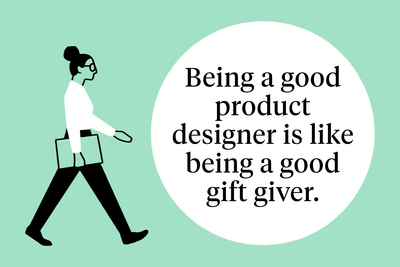Marketing Innovation Jan 14, 2016
“Nobody Asked for Uber”
Tim Calkins on profitable growth, strong brands, and delighting your customers.

Riley Mann
For business leaders looking to grow and scale a company, it can be difficult to identify opportunities for innovation. According to Tim Calkins, a clinical professor of marketing at the Kellogg School, customers often are unable to articulate the improvements or features they truly want in a product or service. Driving profitable growth means developing a framework to retain customers while developing innovative services.
TRANSCRIPTS
Video 1 (1:18): Business Growth Tip: How to Identify Opportunities for Innovation
Now the hard part when it comes to finding growth opportunities is that what people want is often not what they can explain.
A lot of the great innovations that come into the world, a lot of the great growth opportunities that develop, are products and services that nobody really asked for. You think about something like Uber. Nobody asked for Uber. Taxis were taxis; they were fine. If you’d asked people what was wrong with taxis, I guess they’re dirty and you sometimes can’t find them when you want them, and maybe they’re too expensive. If you had than some research, that’s what people would have told you.
A platform like Uber comes along and all of a sudden people say, “My gosh, that’s fabulous. I love that and I really needed that. I don’t know how I would exist today without it,” but they never could tell you this, partly because the insights that motivate people are things that in many cases people can’t explain. This is why marketing is hard. It’s why innovation is hard. It’s why growth is sometimes hard, because the easy things, the obvious things, are often not the most promising opportunities.
Video 2 (2:31): Business Growth Tip: Building a Framework for Profitable Growth
The universal business challenge, really, is to find ways to grow and to find ways to keep the company moving forward and expanding and growing. For anybody going into the world of business, growth has to be top of mind. It’s got to be what you’re thinking about because that will define, ultimately, your success.
One of the big differences too is between growth and profitable growth. One of the challenges, I think, is that if you’re not careful, you can get very caught up on the top line and you lose sight of the bottom line. Revenue is good but revenue isn’t everything. Revenue only matters if it’s profitable. Ultimately, you’ve got to find a way to generate margin and to generate the profits.
It’s not enough just to look for opportunities and innovations and new ideas, you’ve got to find the ones that are going to turn into profitable opportunities and, ultimately, into cash flow and growth coming from those. Growth is really about the customer. If you’re going to grow, you’ve got to find ways to get out there, connect with customer needs, to deliver against their needs and wants. In all the classes I teach, we circle around these points because they̵#8217;re really the foundations, in a way, of a growth strategy.
What they ran into at Discover Card was that they needed to find ways to grow. But the challenge was that a couple years back in the financial downturn, their resources were very limited. The problem is that on a credit card, it takes a lot of money to bring in a new person. You’ve got to get out there and put forth a really strong offer: maybe that’s just a cash payment, or maybe that’s zero interest for a certain period of time, or maybe that’s miles, if you’re in that kind of a world. But bringing in new people is really costly.
What they did, they looked at the different elements of the equation and they said, “The key here is, what we’ve got to do is we’ve got to find a way to hang onto our existing people.” That lead to a whole series of efforts then designed to really delight their customers, to make sure their customers were feeling connected with the business, to make sure they liked that card more than other cards and they were staying with the business.
Ultimately, it worked out brilliantly well. They slowed up the attrition and they built with the current customers and in total, Discover Card went on to have just a remarkable run of success and growth by really thinking strategically about the different elements.
Video 3 (1:35): Business Growth Tip: Building and Evolving a Brand to Facilitate Growth
Building a great brand is really all about growth. The reason we care about brands is because brands are platforms for growth more than anything. If you’ve got a brand that’s a strong brand, by that it’s a brand that people know about, it’s got awareness, but it also is a brand that stands for something. It’s a brand that people value and will pay for. If you’ve got a really strong brand like that, that is a key lever when you think about growth because with a great brand like that, you can do all sorts of different things. You can extend the brand into different categories and find opportunities for growth with new products. You can increase your prices. You can raise prices and that’s a way to find margin growth and to drive profits through top-line activities.
As times change, as customers change, as technology changes, we need to evolve a brand to keep it relevant, to keep it up-to-date, to find platforms for growth. Finding a way to transition a brand over time can be difficult, but that’s one of the things you really have to do.
The other thing, sometimes though, is you’ve got to say, “We have our current brand which is really strong, but then it might be time to think about introducing a second brand or a third brand or a fourth brand.” The topic of growth very much lends itself to the question of brand portfolios. How do we build a great collection of brands that together can work to find ways to increase profits and cash flow for the company?
Video 4 (1:03): Business Growth Tip: Which Questions to Consider When Building a Brand Portfolio
Constructing a good brand portfolio is a really important part of driving growth. What we need to think about is how far can we push our existing brand? Then how many additional brands might we need? Often to address different opportunities, different customer groups, we’re going to need not one brand we’ll need to assemble a variety of different brands.
That all becomes rather complicated. First because there’s different ways to assemble a brand portfolio. There are sub-brands, there are endorsed brands, there are branded ingredients, there are branded services. There are all these different ways we can construct a portfolio. Then the other thing that makes it hard is that at some point we can go to far. We can find ourselves with a portfolio that is too many brands, that’s too complicated, too hard to manage, too difficult. The question for any business is to say, well, do we need more brands or do we have too many? How do we really optimize all of this?


